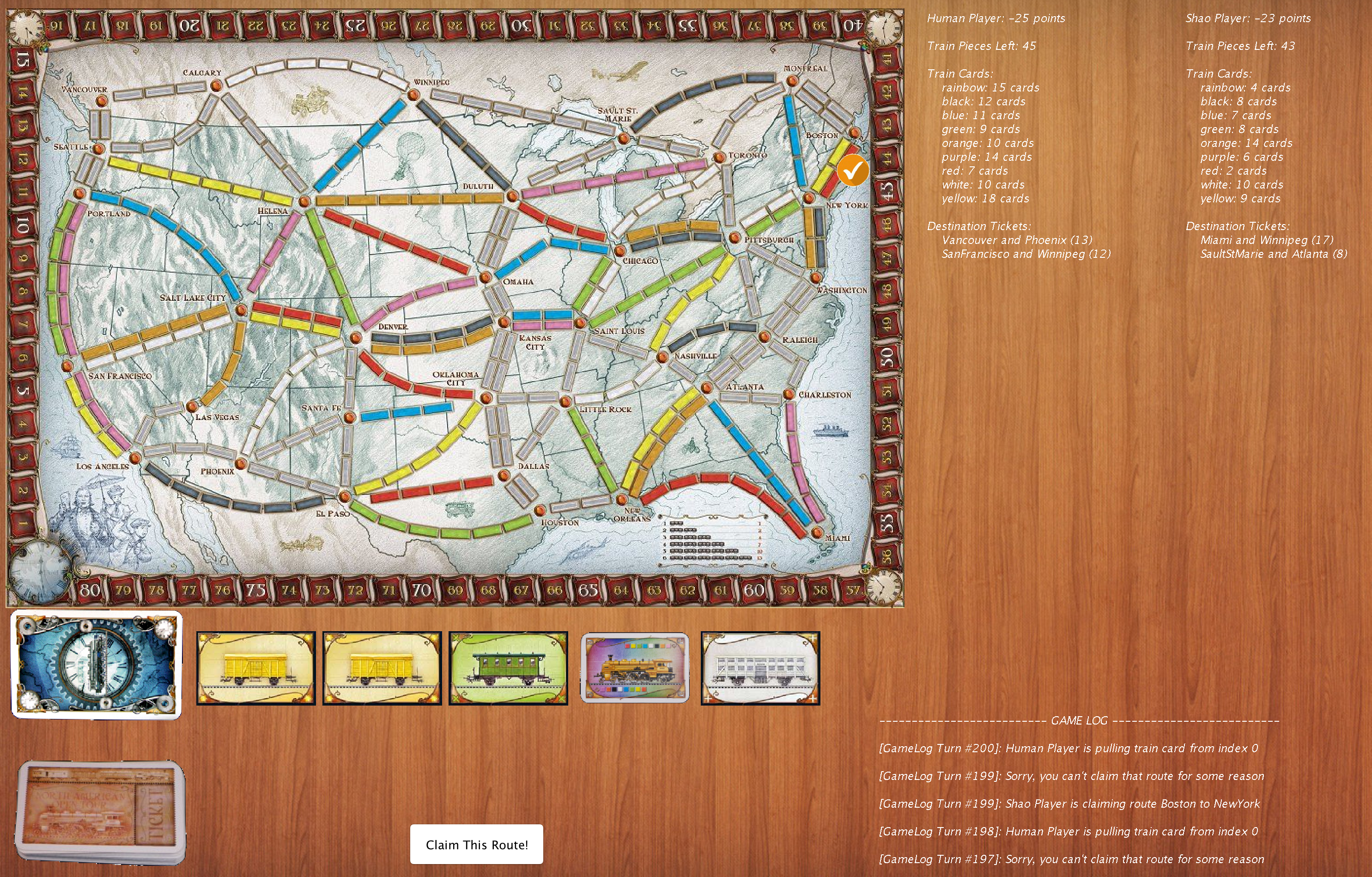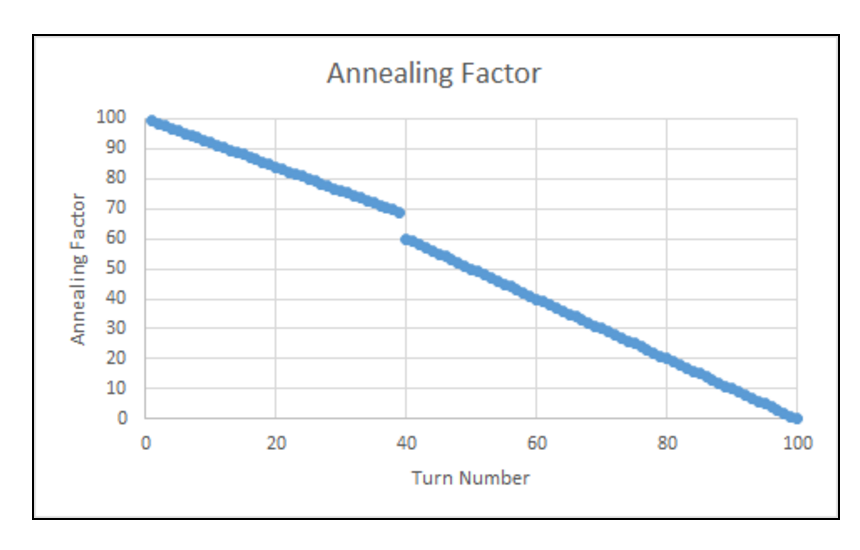An AI agent to play board game Ticket to Ride
This program uses BFS Search to find the shortest path between two cities, and Simulated Annealing to determine some of the actions to make. The simulator code was provided.
Rules:
-
There are 2 types of cards: destination cards and train cards.
-
There are 3 possible actions to take in each turn: draw 2 desination cards, draw 1 train card, or buy 1 route.
-
There are multiple colors for train cards, including wild cards.
-
Each route within the map has a color attribute and a cost attribute.
-
Finishing destination cards will get a reward of the cost of that route, not finishing them will result in negative punishment of the reward.
Goal: Within 200 turns, or before train cards run out, the player with higher points wins.
Language: Java
Under src/ttr.model/player are the players created to play the game.
Run src/ttr.main/TTRMain to start the GUI and the game.
After a brief analysis of how human play this game, we found the following strategies:
- Finish game fast. This gives us the advantage of having more routes purchased while our opponent is still building out his path or hoarding cards.
- Finish 2 destination tickets. This gives a baseline for planning out routes, as well as takes away the negative penalty at the end of game due to incomplete destination tickets.
- Prioritize longer routes first. Since the Value Per Train increases as the route becomes longer, the longer routes give a much better return on our investment and thus should be prioritized.
- If impossible to finish destination ticket, buy most expensive ones. Normally, an average game with our algorithm will take up to 130 turns in total. So we implemented an annealing factor to deal with later in the game where the algorithm may not be able to finish the destination ticket.
annealingFactor(){
if turn < 40
annealingFactor = (1 - (turn / 100)) * 80 + 20
Else
annealingFactor = (1 - (turn / 100)) * 100
}dicisionMake(){
turn++ // increment turns counter
TICKETS // set of all destination tickets in hand
possibleRoutes // set of all AFFORDABLE routes sorted in descending cost order
if TICKETS is empty
if turn <= 20
draw destination tickets // if finish all destination tickets before 20th turn, draw another 2
else
if currently have more than 5 train cards of same color
claim affordable route
else
randomDecision // a random number < 100
// more towards later the game, more likely to buy routes than drawing cards
if randomDecision < annealingFactor
drawTrainCard // prefer rainbow cards
else
if possibleRoutes is not empty
claim route
else
drawTrainCard // prefer rainbow cards
else // still have destination tickets in hand
if there is an affordable route in shortest path of any of the destination tickets
claim route
else
drawTrainTicket // prefer rainbow cards
}Two sepertate annealing factor functions for early game strategy and later game strategy. In later games, the probability of drawing cards drops faster.
We created 4 players for testing. We let MainPlayer play 50 games against the other 3 players. (25 where opponent went first)
MainPlayer implements the pseudo code given above.
ShaoPlayer implements a very similar algorithm as our main algorithm does, with the exception that ShaoPlayer does not use annealing.
BasicPlayer’s strategy is to buy routes as soon as it can afford one. This strategy leads to a hoarding of short routes, which can potentially lead to blocking a path the opponent has planned.
The baseline case is StupidPlayer. It only draws card and does nothing else.
The results are as followed:
| Player 1 | Player 2 | P1 Average Score | P2 Average Score | Point Difference (P1-P2) |
|---|---|---|---|---|
| Main algorithm | ShaoPlayer | 59.68 | 70.94 | -11.26 |
| Main algorithm | BasicPlayer | 82.85 | 76.29 | 6.56 |
| Main algorithm | StupidPlayer | 90.94 | 0.00 | 90.94 |
The key observation we made in regards to winning games is the importance of finishing your destination tickets. Many games in which our main algorithm was able to beat ShaoPlayer are games where ShaoPlayer was not able to complete his destination tickets while own main algorithm did. This not only provides a penalty differential more favorable to our main algorithm, but also shows a more efficient use of card drawing.
We were surprised that ShaoPlayer was able to defeat our main algorithm more often. Our main algorithm’s annealing factor does not kick in until it has completed its destination tickets, before which point, ShaoPlayer and the main algorithm actually utilize the same algorithm in drawing cards and claiming routes. Thus, the fact that our main algorithm loses more often and most losses happen when it fails to complete its destination tickets, shows that annealing factor does not have an impact on the game since it did not get to utilize that part of the algorithm, and that many games are won or lost on pure luck of the draw when the initial destination tickets are given.

